Our Verdict
Battle Chasers: Nightwar is a gorgeous, challenging RPG that’s light on story but big on tactically satisfying battles.
PC Gamer's got your back
What is it? A challenging JRPG and dungeon crawler based on the comic book Battle Chasers.
Developer: Airship Syndicate
Publisher: Airship Syndicate
Expect to pay: $30/£25
Multiplayer: None
Reviewed on: Windows 10, AMD FX-8350, 8GB RAM, GeForce GTX 960
Link: Official site
Battle Chasers: Nightwar tackles the tedium of traditional JRPG turn-based combat by turning every fight into a tense interplay of meaningful tactics. Despite some frustrating elements and balancing issues, Nightwar provides some of the most satisfying RPG battles I’ve experienced all year—and looks nice doing it.
It's based on game designer Joe Madureira’s '90s comic Battle Chasers, but the game firmly focuses on classic turn-based JRPG combat. In lieu of the usual basic attacks and damage spells, each character (and enemy) has a wide variety of actions and abilities, and most battles are tense and meaningful.
Actions are instant attacks but always have some extra functionality, like stacking debuffs, taunting enemies, or increasing the attack power of the next attack. Abilities are even more powerful attacks and spells, and you’ll unlock new ones as you level up, eventually giving you a huge arsenal of tactics to unleash—with the caveat that abilities use mana and take longer to deploy.
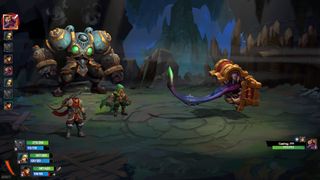
Efficiently synergizing the wealth of abilities remains interesting and fun throughout the 40+ hours Nightwar takes to finish. One example: Gully is the tanky character, with high defense stats. She has several abilities that reduce damage and create shields and comes with Taunt as a free action, letting her draw attacks to herself. After taunting I can use Defend or Guard Punch to further reduce her incoming damage, or use Barrier Swing or Protection to shield allies from enemy AOE attacks.
You’ll spend the bulk of your adventure on the combat screen, and every character looks and sounds fantastic, from the echoing pings of rapid-fire gunshots to the hilarious gurgling of slimes.
Every party composition brings nifty synergies to explore. Calibretto can Ignite foes with Cannon Blast, while Alumon’s Blood Boil is a guaranteed crit on foes who are ignited. Alumon also has a perk (earned by leveling up) that lets him instantly heal an ally whenever he crits, which works great with the Ignite combo.
In the late game I built Red Monika into a dodge tank by stacking her evade stat and using abilities like Distracting Shot, Fade Strike, and Lightning Reflexes to raise her evade percentage during combat, then grinning when an earth elemental fired off a barrage of rocks and watched her dodge every single one, then turn around and attack with a high-powered Riposte. I eventually built my whole combat strategy around drawing enemy attacks to her while she (and I) gleefully shrugged them off. It was a well-honed yet risky strategy that could cause my whole party to collapse if a few lucky hits made it through.
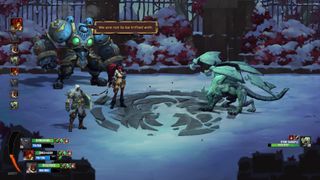
You’ll spend the bulk of your adventure on the combat screen, and every character looks and sounds fantastic, from the echoing pings of rapid-fire gunshots to the hilarious gurgling of slimes. The UI is also a big winner, making it easy to keep track of initiative, hit points, and the constant buffs and debuffs that every fight produces. One of my favorite visual touches is the banter that heroes and foes trade during combat, which adds playful personality to a game already brimming with character.
As great as the combat is, Nightwar stumbles when it comes to pacing and balancing.
Battle Chasers: Nightwar stars a colorful, exaggerated fantasy cast pulled from the comic: plucky orphan Gully with her magic gauntlets, protective war golem Calibretto, surly swordsman Garrison (who smolders with generic rage), feisty old wizard Knolan, sultry scoundrel Red Monika, and one new character—the mysterious blood mage Alumon.
The early plot boils down to finding the rest of your scattered party after your airship is shot down. It picks up a bit as you investigate troublesome bandits, eventually leading to skeletal armies and a demon-summoning witch. There’s fun interplay between characters, particularly the character-building dialogue scenes that occur when you rest in town, as well as some nice voice acting, but the story is mostly an excuse to get you crawling through dungeons and focusing squarely on Nightwar’s combat.
As great as the combat is, Nightwar stumbles when it comes to pacing and balancing. The first 10 hours (or about three dungeons) are a cakewalk, and a poor indication of the challenge that lies ahead. Around the time I got Red Monika I hit a nasty difficulty spike that never really let up. Reaching new areas I was met with enemies several levels above my own. Fights dragged on and some enemies could utterly destroy my under-leveled team, as better equipment requires you hit certain level milestones.
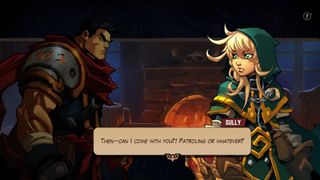
I was forced to grind. I’m okay with grinding in an RPG for tackling extra content, or to make future fights easier. In this case I had to grind previous dungeons and areas just to be able to survive the next one. The harsh grind also discouraged me from changing party members as those not in the current party don’t gain any XP. A patch was released while I was playing to help smooth the curve, but this is still a 30ish-hour RPG that felt stretched over the nearly 50 hours it took me to finish.
Thankfully all eight dungeons are designed to be replayed, with randomized layouts and multiple difficulty levels. When entering a dungeon the overworld map shifts to an isometric view full of traps and enemies. Each party member has two skills they can employ in this mode, such as Garrison sprinting over spike traps or Red Monika stealthing past enemies.
I crave exploration in my RPGs and the dungeons scratched that itch wonderfully. They’re full of secret loot, collectible books, patrolling enemies, fishing mini-games, and crafting tables to make your own gear and enchantments. I enjoyed the crafting system, with your chance of success dropping several percent for each missing ingredient, but the fact you can only craft inside dungeons for the bulk of the game is head-scratching.
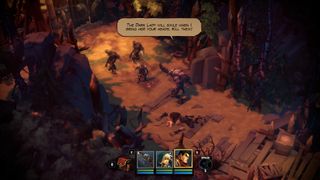
An extensive bestiary that unlocks more information about enemies as you kill them is another neat idea, but I quickly forgot about it due to Nightwar’s grind. I fought the same enemies so many times I became acutely familiar with everything they could do (though unlocking their specific hit point number is still useful).
That leads to Nightwar’s other big stumbling block: enemy variety. In no modern RPG should I still be fighting differently colored slimes, bats, and giant spiders 20, 30, and 40 hours into the game. The actual art and animations remain exquisite but every time I saw the same repeated designs I was reminded this ambitious RPG was hamstrung by its indie budget.
Balancing issues aside I adored my time with Battle Chasers: Nightwar. The sights and sounds of every encounter, from the death knight dragged down by skeletons to the metallic CLANG when Calibretto punched a baddie, always made me smile. The comic's characters translated wonderfully to a game and the old school '90s JRPG combat is uplifted into something beautiful, complex, tense, and compelling.
Battle Chasers: Nightwar is a gorgeous, challenging RPG that’s light on story but big on tactically satisfying battles.

About darn time: Microsoft says it has fixed the annoying lag in Windows Explorer when working with cloud-based files
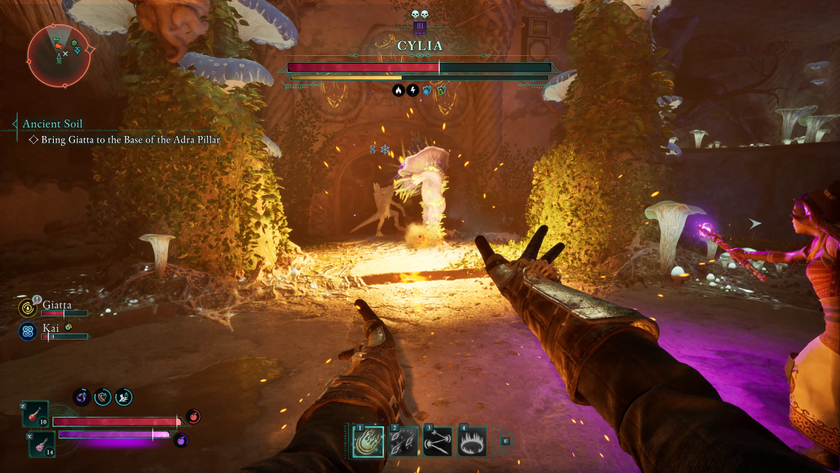
My respec in Avowed turned the combat from Skyrim into Dishonored, and now I'm having a blast as an invisible parkour sword-mage
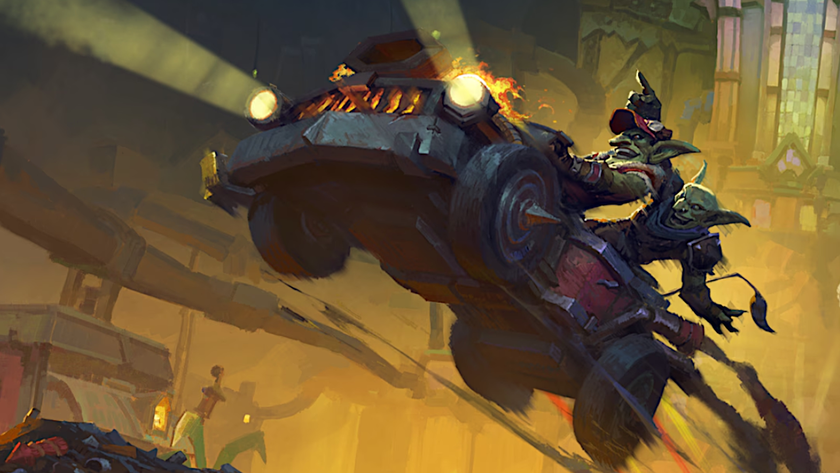
WoW next big patch, Undermine(d), gets a release date, starting the countdown clock until my gaming time is entirely consumed with doing donuts in my new ride

